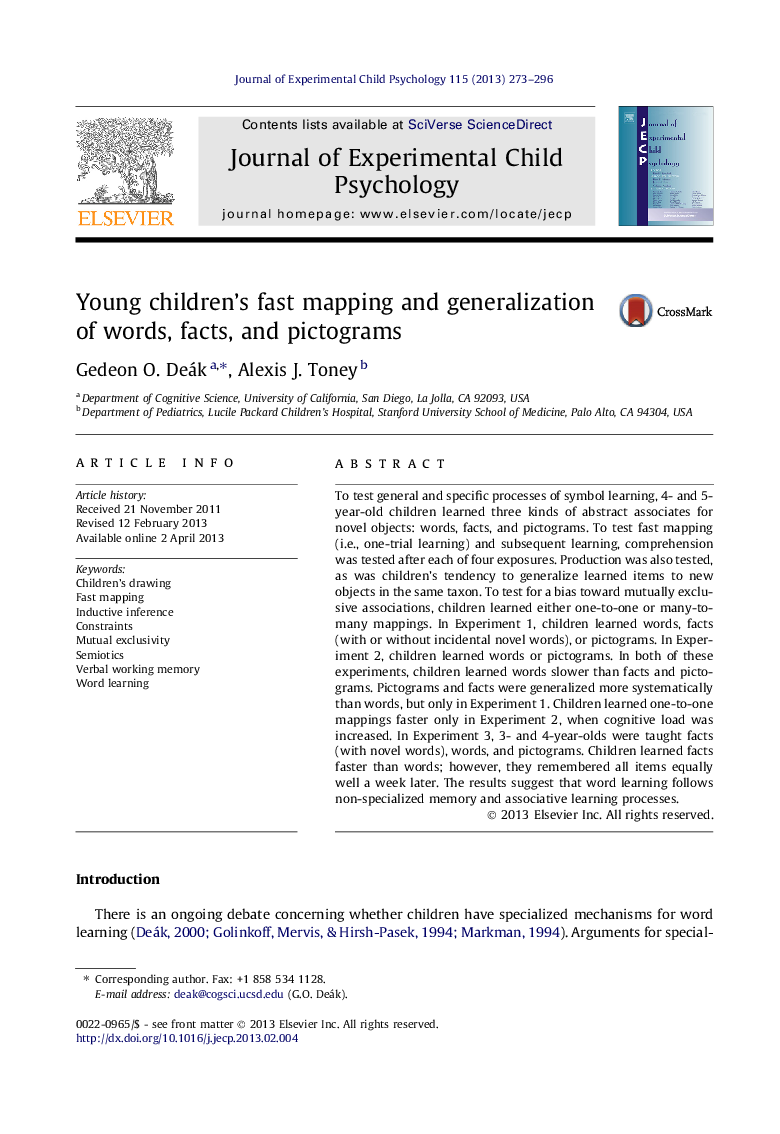| Article ID | Journal | Published Year | Pages | File Type |
|---|---|---|---|---|
| 918170 | Journal of Experimental Child Psychology | 2013 | 24 Pages |
To test general and specific processes of symbol learning, 4- and 5-year-old children learned three kinds of abstract associates for novel objects: words, facts, and pictograms. To test fast mapping (i.e., one-trial learning) and subsequent learning, comprehension was tested after each of four exposures. Production was also tested, as was children’s tendency to generalize learned items to new objects in the same taxon. To test for a bias toward mutually exclusive associations, children learned either one-to-one or many-to-many mappings. In Experiment 1, children learned words, facts (with or without incidental novel words), or pictograms. In Experiment 2, children learned words or pictograms. In both of these experiments, children learned words slower than facts and pictograms. Pictograms and facts were generalized more systematically than words, but only in Experiment 1. Children learned one-to-one mappings faster only in Experiment 2, when cognitive load was increased. In Experiment 3, 3- and 4-year-olds were taught facts (with novel words), words, and pictograms. Children learned facts faster than words; however, they remembered all items equally well a week later. The results suggest that word learning follows non-specialized memory and associative learning processes.
► Preschool-aged children may learn novel facts or visual symbols (‘pictograms’) faster than words. ► Children generalize new facts or pictograms to sets of objects, much like new words. ► Children learn words, facts or pictograms faster if each one refers to just one thing. ► Preschool children learn words and pictograms much more slowly than adults.
